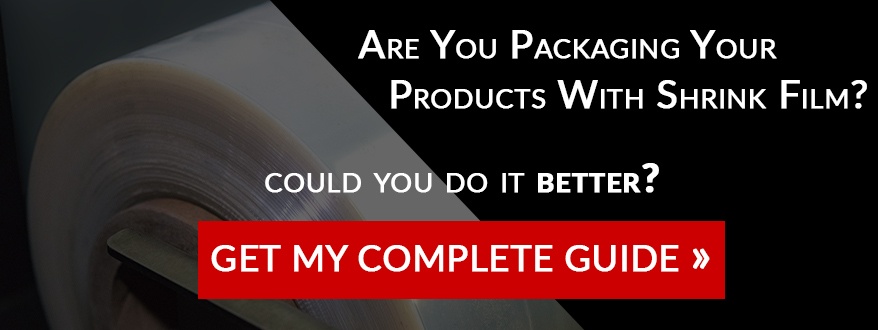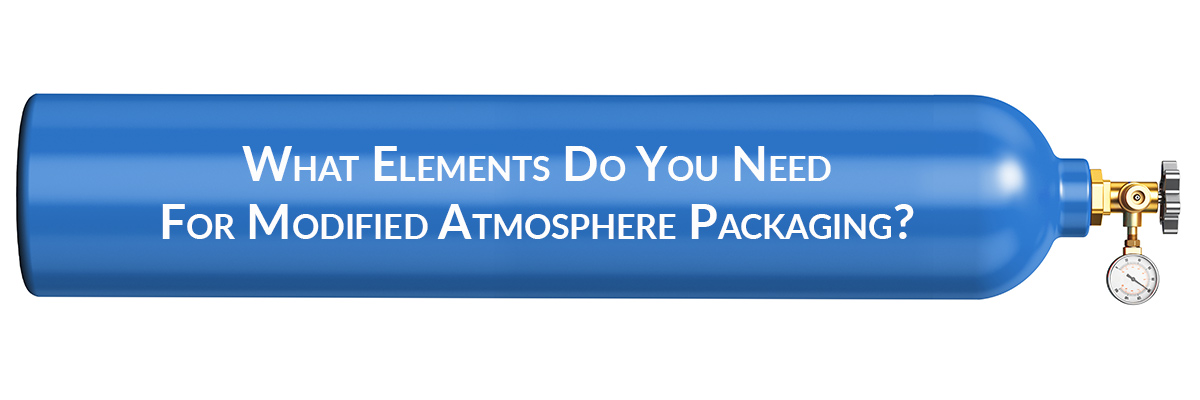What Elements Do You Need For Modified Atmosphere Packaging?
When it comes to MAP or modified atmosphere packaging, there are some very unique dynamics that you do not find in other types of packaging supplies and processes. These elements include specialized equipment, various gasses and metering tools to ensure the right balance of gas. In the article below, we will teach all of the elements required for producing modified atmosphere packaging for your products.
Over the last 20 years, we’ve worked with many clients to set them up to properly produce MAP. Our goal with this article is to help you understand what you need to produce modified atmosphere packaging on your own.
Required elements for MAP include gas, machinery and testing equipment.
What Is MAP Packaging?
Modified atmosphere packaging is an act of modification on the internal composition of a package's atmosphere. MAP is used to remove oxygen from the inside of a package. The purpose of modified atmosphere packaging is to extend the shelf life and enhance the aesthetic of certain food products.
Sourcing The Appropriate Gases
When preparing to implement modified atmosphere packaging for your packaging line, there are multiple items you will need to source. Some of these unique components are not available from all packaging supply companies. First among these are the appropriate gas or gasses.
One way to identify the appropriate gas for the packaging of your food items would be to work with a university that has a food science lab. There, they can perform accelerated aging tests for the shelf life of your products. This helps you determine which gas is best suited to replace the oxygen in your package.
That being said, there is another route which you can take to identify and source the right gases for your products. There are various gas companies producing gas for MAP applications who, depending on your product, may be able to help you select the right gas.
From linde-gas.com:
"MAPAX gas mixtures usually consist of the normal atmospheric gases such as carbon dioxide (CO2), nitrogen (N2), and oxygen (O2). Microbial growth can also be inhibited to a certain extent with the help of other gases such as nitrous oxide (N2O), argon (Ar) and hydrogen (H2).
These gases can be applied individually or mixed according to specific ratios. CO2, for instance, is most effective in inhibiting microorganisms (such as mold and other common aerobic bacteria). It does this by dissolving into the food's liquid and fat phase, thereby reducing its pH value. It also penetrates biological membranes, causing changes in permeability and function.
As an inert gas, nitrogen is primarily used to replace oxygen in packaging, thereby preventing oxidation. Owing to its low solubility in water, nitrogen also helps to prevent package collapse by maintaining internal volume."
Working with a gas supplier such as the one mentioned in the quote above will help you to find the right gas for your product. As for which type of gas is right for your product, it's completely case sensitive.
For example, red meat requires some oxygen to keep it from discoloring, while bread requires a total lack of oxygen to prevent mold. Every product will require a different gas or gases depending upon what it is.
Choosing A Supplier
Once you have identified the proper type of gas to use for your products, you will need to identify a supplier. Typically you can source gases from a gas supply company or sometimes a packaging company. The gases for MAP are relatively common; however, you may not be able to source them from your packaging vendor.
Often, your packaging vendor will work with a gas supply company to source the gases needed in addition to the other required materials that the packaging vendor can easily provide.
When shopping for the appropriate gases, you should speak with at least 3-4 companies and talk with a representative from each. Based on the information you collect from this research, you should choose the vendor you feel is best.
Next, you will need to have a rep from both your gas supply company and your packaging materials vendor to visit and analyze your products and packaging line.
The purpose for this is to have them collect data about your particular needs in regards to machinery, gases, your products, and your current packaging processes. Then, they can generate a proposal for what gases and additional items or machinery your MAP requirements will entail.
Necessary Elements And Machinery To Produce Modified Atmosphere Packaging
If you do not already have an oxygen analyzer, chamber sealer, and the appropriate shrink film capabilities for your packaging line, you will need to buy these items for MAP applications. Here we will detail each of these elements and explain what they are and how they work.
1. Oxygen Analyzer
This is a handheld device that can be used to test the oxygen content of a package that has been created using modified atmosphere packaging to show it's oxygen content. Many applications for MAP require the full or partial removal of oxygen from the package, and this device is a must-have for quality assurance.
The device looks like a two-way radio with a syringe needle attached to it. The needle is used to pierce randomly selected packaged products and test the contents of the packaging. The portion of the device which looks like a two-way radio has a screen on it that displays the oxygen levels inside the package.
Regular testing of your oxygen is required to ensure the correct levels. If they are not at the appropriate levels, it means that you will need to make adjustments to one or more elements of your MAP packaging process, machinery, or materials.
2. Chamber Sealers For Gas Flushing
When packaging food with MAP, the most common gas to use is nitrogen. The reason for this is that nitrogen flushing lowers the contents of oxygen inside of the package. Gas flushing with nitrogen is primarily used in MAP to replace oxygen as the presence of oxygen increases the rate at which many foods spoil.
Oxygen is replaced with nitrogen with the use of a machine called a chamber sealer. A chamber sealer uses vacuum technology to remove all of the air inside of a package and put nitrogen in its place. This results in the production of an airtight container. A heating element then seals the package trapping the nitrogen inside, effectively removing the oxygen within.
3. Shrink Films For Gas Barriers
MAP applications often require the use of shrink films, which are implemented as gas barriers. These shrink films feature low permeability resulting in positive reductions in moisture and oxygen. Shrink films commonly used for this purpose include but are not limited to polyethylene (LDPE), polyvinyl-chloride (PVC), or polyolefin (POF).
Polyolefin shrink film is particularly popular for food packaging as it is FDA approved. There are also new products in this field coming to market that feature interactive or digital components that alert consumers to damage, gas leaks, changes in temperature, and tamper evidence.
Need Help Choosing The Right Shrink Film For Your MAP Application?
Other Forms Of Modified Atmosphere Packaging
- Desiccant Packets
Desiccant packets are small-medium sized bags which contain non-edible (and frequently toxic) ingredients that absorb moisture from certain types of packaged foods (beef jerky for example). The outer layer of the packet prevents the contents from touching the food inside. Usually, it will have a written warning on the outside not to ingest the contents of the packet.
Desiccant packets are available in a multitude of different sizes. The outside of the packets can be made from various materials (clay, tyvek, plastic, etc.) and often contain silica gel or other ingredients that remove moisture and protect the flavor of the food contained within the package.
- Package Valves
Package valves are small (usually plastic) valves that can be added to a substrate (for example, stand up pouches), which allow for gases and smells to escape without oxygen entering the package. Examples of products that use this technology include industrial hemp, coffee, and other items which require the release of gas or scent from the packaging.
Optimize Your Modified Atmosphere Packaging
Sourcing all the correct materials, machinery, gasses, and components is the first step. Next, you will want to be sure to work with your gas and packaging material suppliers to implement a regular process for reviewing and continually improving KPIs.
We highly recommend that once you have implemented MAP on your packaging line to apply for a preventative maintenance program. A regular analysis of your packaging line done by your chosen vendor's representative is also suggested. We don’t recommend these services just to bring in additional revenue for Industrial Packaging.
With both of these elements in place, you will be able to improve the performance, optimization, speed, efficiency, and related dynamics of your packaging line. You will also be able to reduce downtime and improve the processes involved with rectifying problems, oftentimes acting before they occur.
Learn all you need to know about shrink to become more efficient, choose the ideal film type and size, and understand costs for your business when it comes to shrink with the complete guide to shrink film!

About Nathan Dube
As the Digital Marketing Specialist at Industrial Packaging, I am honored to create content for such a phenomenal company and work with one of the greatest teams in the Packaging Industry. Whether creating a video, writing blog posts or generating other pieces of content and multimedia, I am always excited to help educate and inspire our prospects and clients to reach their highest potential in regards to their packaging processes and needs.



